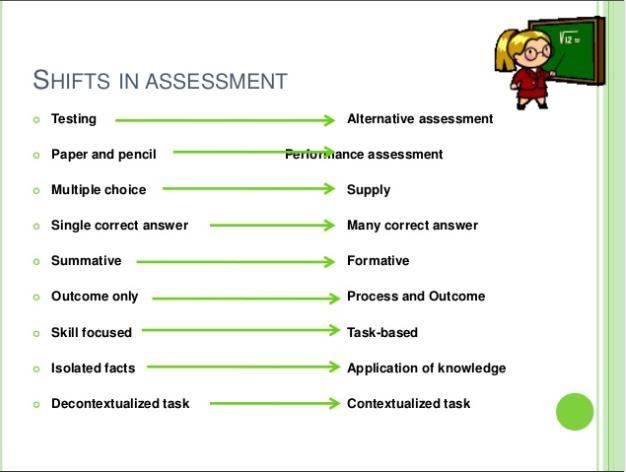Assessment is one of the key components of learning as it helps students learn and improve learning.
Assessment is not simply about evaluating student performance but a way by which teachers can help motivate students.
Over time, as the society and school have evolved assessments to need to cater to multiple purposes and for which they indeed need a toolbox full of assessment ideas to address them all. This is because, as one comes to know more about how learning happens, assessments take on a different sheen. Teachers clearly understand that having a single purpose for assessment is not relevant considering the changing time.
Taken as a whole, good assessments cannot only provide a reliable and valid measure of a students’ learning and understanding but it also helps guide both teachers and students on a day-to-day basis. Students assessment either through standardized tests or classroom-based measure is important for it is a cornerstone of effective teaching and learning.
Considering the fact that in aligning assessments to help students and employees meet the challenges of an increasingly complex world, it is important to note that current knowledge areas covered in the curricular subjects will need to be carefully redesigned in order to modern disciplines as well as a select set of traditional disciplines, with options for interdisciplinary exploration and themes are woven throughout. The shifts in the assessment are explained better below.

It first appeared in a presentation by
Dr. Carlo Magno- Associate Professor of Educational Psychology
Further, today’s teachers need to consider essential design elements into their curriculum, the plausible way for the teachers to do so is by creating professional habits around replacement thinking. The four important considerations for the replacement thinking around assessments are-
1. Students must be given ample scope to demonstrate what they’ve learned say- whatever they have created by making use of digital tools should still represent what students were to learn. The idea is that the assessment must not tell more on the use of digital tool rather focus on student’s work using the tool.
2. Students must be able to demonstrate content proficiency and sophistication. The new product must also be able to reflect the content knowledge that they’ve learned and the multiple cognitive zones they participated in during the learning process.
3. Student’s sole focus should be on frequently reflecting on their choices and how they can articulate and defend their tool choices. They should also be able to defend the content inclusion and degrees of audience interaction and how it actually helped them to reach the final result or the end product.
4. Students should also learn to give credit where it is due. It is important for them to learn about and acknowledge the importance of copyright, creative commons licensing and how to search for and use appropriate content, giving full attribution to the source from which they have derived the resource.
What methods to adopt in assessments?
1. The assessments should measure what is really important in the curriculum
2. Assessment should look more like instructional activities than like tests
3. Educational assessments should approximate the learning tasks of interest, so that, when students practice for the assessment, some useful learning takes place.
There are actually three alternatives forms of assessments namely, performance-based assessment and portfolio assessment. That said teachers must aim to push on performance for it has many real-time benefits attached to it. Also that, performance assessment brings testing methods more in line with instruction and assessments should approximate closely what it is students should know and be able to do.
At a time when contemporary instructional practice is receiving an overwhelming appeal, the curriculum design is also curved out that it invites students to the design table and allow them to co-create the learning experience. Therefore, taking such into consideration, the benefit of focusing attention on performance assessment is that, it allows assessing higher-level cognitive skills rather than narrowing and lowering level discreet skills. It also directs measures of skills of interest.
Essential design aspects of 21st Century Assessments
1. The design should support a balance of assessments- including high-quality standardized testing along with effective classroom formative and summative assessments.
2. It must include a strong emphasis to gather useful feedback on student performance that is embedded into everyday learning.
3. The design must be a balance of technology-enhanced, formative and summative assessments that measure student mastery of 21st Century skills.
4. The design must enable development of portfolios of student work that demonstrate mastery of 21st-century skills to educators and prospective employers.
5. Design should enable a balanced portfolio of measures to assess the educational system’s effectiveness at reaching high levels of student competency in 21st Century skills.
Methods and assessment tools may differ, but while designing 21st-century assessment, teachers must consider the essential designing aspects of modern day student assessment. Teachers also need to understand that, the main purpose of the assessment is and will always be to boost the learning experience of students. It is not to simply a method through which should student’s performance are analyzed but a way by which their strengths and weaknesses are acknowledged and given a positive direction to improve their learning experience in the future course of action.
So what are your views on it? Do you think likewise or differ with our opinion? Let us know your views on it through your comments and help in taking forward the discussion.